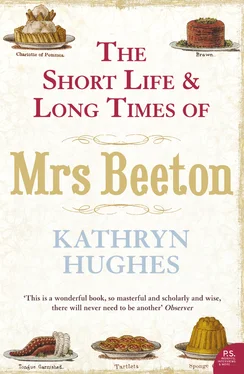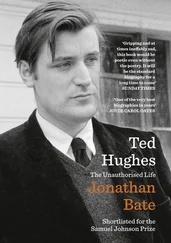If Epsom was basically a one-horse town for most of the year, for one week every summer it was inundated with the very finest examples of the species. For a man as canny as William Dorling, the obvious next step was to insinuate himself into the racing culture. In 1826 he started printing ‘Dorling’s Genuine Card List’, colloquially known as ‘Dorling’s Correct Card’ – a list of the runners and riders for each race. It sounds a simple thing, hardly a product on which you could found a fortune and a business dynasty, but in a world as chaotic and cliquey as racing, accurate information was at a premium. The Correct Card, put together from knowledge Dorling gleaned as he walked the Heath early every morning chatting to trainers, grooms and jockeys, was a way of communicating intelligence that would otherwise lie scattered and obscured to the ordinary race-goer. Indeed, as the Illustrated London News reported during Derby week of 1859: ‘half of the myriad who flock to the Downs on the Derby Day would know nothing of the names of the horses, the weights and colours of the riders, were it not for Dorling’s card, printed feverishly through the night in the printing shed next to the family house and sold the next morning by hoarse vendors posted at every likely point.’
As William’s eldest son, Henry Dorling gradually took over the running of the business. His appointment as Clerk of the Course in 1839 was a recognition of the family’s growing involvement in Epsom’s chief industry. But there was only so much that the position allowed him to do in the way of cleaning up the moral slurry that was keeping respectable people away. To have real influence, to pull Epsom together so that it was a smoothly integrated operation, Dorling would need to take control of the Grandstand too. When it had opened in 1830 the Grandstand had been the town’s pride and joy. Designed by William Trendall to house 5,000 spectators, it had cost just under £14,000 to build, a sum raised by a mixture of mortgage and shares. The imposing building – all Doric columns, raked seating and gracious balconies – was designed to combine the conveniences of a hotel with the practicalities of a head office. According to the Morning Chronicle , which puffed the grand opening on its front page of 12 April 1830, the Grandstand incorporated a ‘convenient betting room, saloon, balcony, roof, refreshment and separate retiring rooms for ladies’. And in case any readers of the Morning Chronicle were still doubtful that Epsom racecourse really was the kind of place for people like them to linger, they were assured that ‘The whole arrangement will be under the direction of the Committee, who are resolved that the strictest order shall be preserved.’
From the moment that the Grandstand had first been mooted back in 1824, the Dorlings had been eyeing it hungrily. William Dorling had been canny enough to buy some of the opening stock, and by 1845 Henry was the single biggest shareholder. Early on, in 1830, William suggested that he might put the prices of entry on the bottom of Dorling’s Correct Card, a stealthy way of identifying the name of Dorling with that of the Grandstand. Although the Grandstand Association initially rejected the idea, by the time of next year’s Derby the prices are firmly ensconced at the bottom of the card, where they would remain for over a century. William Dorling’s hunch about Epsom’s promise had paid off after all.
But by the 1840s, and despite all that ‘strictest order’ promised by the committee, the Grandstand was not quite the golden goose that it had once seemed. Its early glamour and promise had leaked away and it was no longer turning a profit. Now that people came to think about it properly, it was not actually very well placed, being parallel to the course and unable to offer more than a partial glimpse of the race. The majority of visitors, everyone from Guards officers to clerks, preferred to follow the action from the Hill, the large high bank which offered a much better view of the entire proceedings. Having finished their Fortnum and Mason picnic (Fortnum and Mason so dominated the feasting on the Hill that Dickens declared that if he were ever to own a horse he would call it after London’s most famous grocery store), they simply stepped up onto their hampers in order to see the race. Unless a Derby-goer was actually inside the Grandstand – and increasingly there was no reason why he would wish to be – then not a penny did he pay.
In 1845 Henry Dorling became the principal leaseholder of the Grandstand, thanks to Bentinck’s strenuous string-pulling at the Jockey Club. This meant that Dorling was now in complete charge of all aspects of racing at Epsom. But in order to deliver the 5 per cent annual return he had promised the Grandstand Association on its capital, he would need to make substantial changes to the way things were done. So he came up with a series of proposals designed to make racing more interesting for the spectators, especially those who had paid for a place in the Grandstand. Horses were now to be saddled in front of the stand itself, where punters could look over their fancy (this already worked a treat at Goodwood and Ascot). And to make the proceedings more intelligible for those who were not already initiates, Dorling instituted a telegraph board for exhibiting the numbers of riders and winners. Races were now to start bang on time (Dorling would have to pay a fine to the Jockey Club if they did not) and deliberate ‘false starts’ by jockeys anxious to unsettle their competitors were to be punished. And, not before time one might think, Dorling put up railings to prevent the crowds surging onto the course to get a better view. Finally, and most controversially, he laid out a new course – the Low Level – which incorporated a steep climb over 4 furlongs to provide extra drama for the watchers in the Grandstand.
The fact that these changes were designed for the convenience of investors rather than devotees of the turf was not lost on Dorling’s critics. For every person who benefited from his innovations – the Grandstand shareholders, Bentinck, Dorling himself – there was someone ready to carp. Different interest groups put their complaints in different ways. The Pictorial Times of 1846, for instance, suggested that as a result of Dorling’s tenure of the Grandstand (only one year old at that point) ‘the character of its visitors was perhaps less aristocratic than of old; but a more fashionable display we have never met in this spacious and, as now ordered, most convenient edifice.’ In other words, the punters were common but at least the event was running like clockwork. The modern equivalent might be the complaint that corporate sponsorship of sport has chased away the genuine fans.
Within Epsom itself the opprobrium was more personal. By the end of his life Dorling had become a rich man and, according to one maligner, strode around ‘as if all Epsom belonged to him’. The obituary in which this unattributed quote appeared went on to add, in the interests of balance, that under Dorling’s reign there had been ‘no entrance fees, no fees for weighing, no deductions’ nor the hundred other fiddles by which clerks of racecourses around the country attempted to siphon off extra income. In other words: Dorling was sharp, but he was straight. Other carpers couched their objections to his dominance by attacking the new Low Level Course which, while it might provide excitement for the Grandstanders, was actually downright dangerous for the horses and jockeys. But, no matter how the comments were dressed up, the real animus was that Henry Dorling was simply getting too rich and too powerful. A letter of complaint written by ‘concerned gentlemen’ on 30 April 1850 can still be seen in Surrey Record Office: ‘we may add that it has become a matter of great doubt whether the office of Clerk of the Course is not incompatible with that of Lessee of the Grand Stand, especially as one result has been the recent alteration of the Derby Course which we hear is so much complained of.’ Henry Dorling’s gradual monopolization of power was beginning to stink of the very corruption that he had been brought in to stamp out.
Читать дальше












